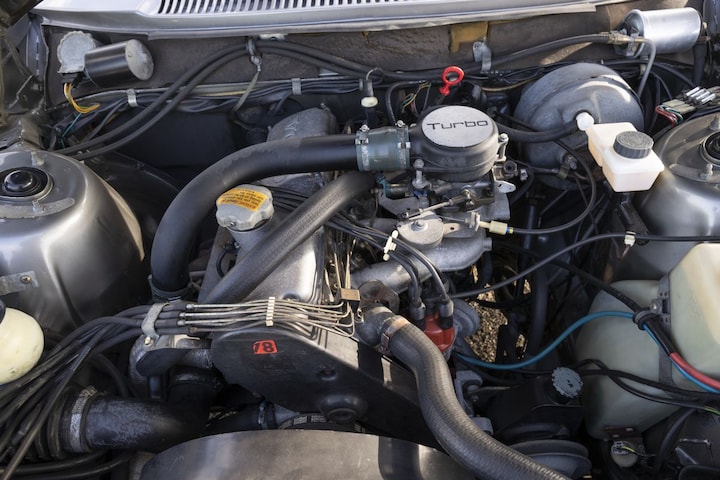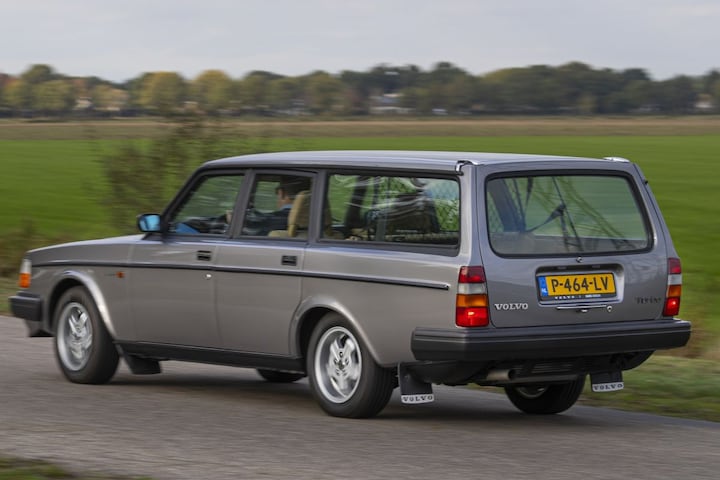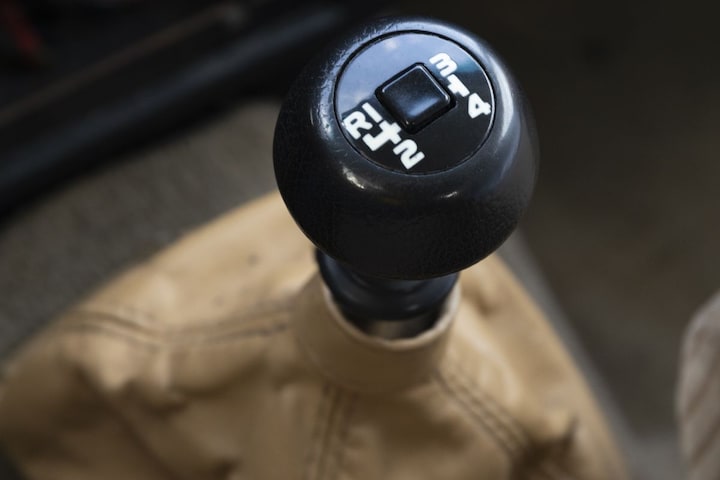Copy from 1984
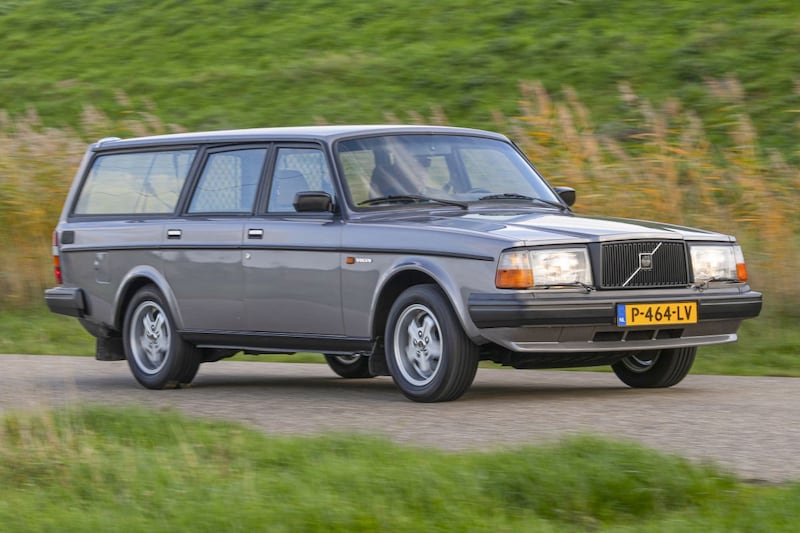
The Volvo 240 was also available as a Turbo. The blown version of the brick came onto the market in 1982, in the years when the turbo era was really gaining steam. We drive a copy from 1984, almost forty years old, and are impressed by the solidity of the fast estate from that time.
When you say Volvo, you think of an angular, large, preferably Swedish-built sedan or station wagon with a robust appearance. The 240 series embodies that like no other and is loved by almost everyone. In addition, it is an incredibly solid car that rivals the Mercedes W123 in that regard. If you handle it properly, you can clock up a million without overhauling the engine or gearbox. A car that you associate with doctors, notables or idiosyncratic, unruly types with a distinct taste, because the fast guys of this world drove BMWs or Mercedes, not Volvo 240s. Its characteristic shape earned it the nickname brick. The model is based on the 140 from the 1960s and it was only in 1993 that the curtain fell on the 240. The classic 140 and 240 were especially popular in the Netherlands when you could still drive tax-free in a car of 25 years and older. Nothing could handle that better than a tough Swede, preferably with a gas tank in the trunk. We’re not talking about the fact that chassis numbers were sometimes tampered with to make a too-young 240 fiscally attractive. We are now in an era where the 240 is still their daily means of transport for many people or a pet that comes out of the garage on nice days. In the latter case we are talking about units with a low odometer reading, which for Volvo means less than two tons. And they are not cheap, as the Turbo we drive proves. It was for sale for €29,500, with a mileage of 191,000.
Inspired by Saab’s Turbo?
Two years after Saab introduced the 99 Turbo, Volvo announced the 240 Turbo. At a time when there were virtually no passenger cars with turbos. Yes, exotics like the BMW 2002 and Porsche 911, but that’s about it. The car manufacturers simply got more power from more cylinders and more capacity. The 240 has always lacked a six-cylinder, apart from that uncivilized commercial vehicle diesel from the Volkswagen LT. Or you had to be prepared to dig a little deeper into your pockets and buy a 264 with a V6, even if you didn’t get much horsepower in return. Just a side step: just over a year after the 240 Turbo, the top model 760 came onto the market. Of course with the well-known PRV, but in 1983 also as a 760 Turbo with a 182 hp 2.3-liter four-cylinder. Perhaps the 99 Turbo gave the people at Volvo an idea, who knows?
In the Netherlands a 2.1 Turbo
On the Dutch market, the 244 Turbo has a 2.1-liter engine with 155 hp. For markets where the cylinder capacity determines the amount of tax, Volvo had a two-liter engine, which in this case is listed as B19ET. That will cost you 10 hp compared to the 2.1, not something to lose sleep over, because let’s be honest: you don’t buy a 240 to go around corners. He is not suitable for that. What makes driving especially pleasant is the considerable amount of extra torque. In modern turbo engines this is already available at less than 1,500 rpm, but in the early 1980s such a compressor driven by exhaust gases really needed some time to get up to speed.
The analog clocks are nice
The dark gray 240 Estate that we received from Volvo dealer Harrie Arendsen is in exceptionally beautiful condition, it must be said. The paint, including that on the wheels, is new and the bright interior is undamaged. You wouldn’t know that almost forty years and 191,000 kilometers have passed here. In the cargo hold we find a folding bench, with the upholstery still in the plastic packaging. This third row of seats offers space for two small children, who then ride against the direction of travel. The seat behind the wheel is high and upright, to keep you focused as much as possible. And then those analog clocks! This makes the car enthusiast’s heart beat faster. A timer and also meters for turbo pressure, oil pressure and engine oil temperature. The round instrument that indicates the outside temperature is just as attractive.
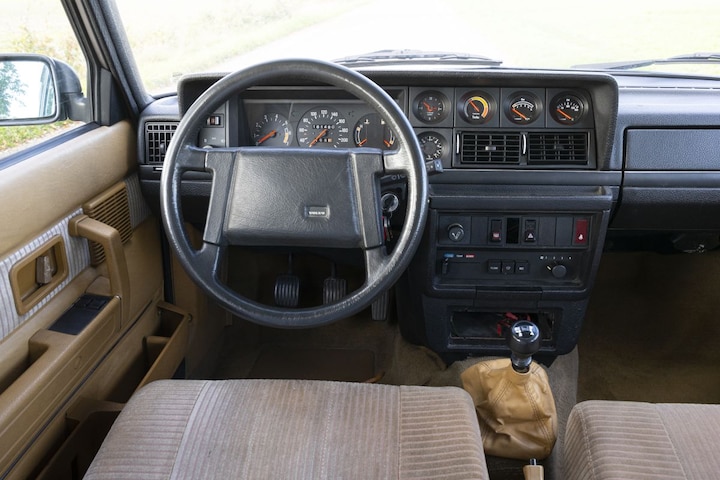
The clocks in the center console. Turbo time!
Okay, that engine. Don’t expect exciting performance from this Volvo. For example, if you are used to a later 240 with the naturally aspirated 2.3-liter engine, you will initially notice little difference because the power source already delivers a bit more torque at the bottom. As mentioned: the turbo needs to spool up for a while and then you notice that there is a little more power. But it never gets exciting. The steering is power-assisted and has not been developed to involve you as a driver in driving. Partly due to the rigid rear axle, the carriage leans considerably in bends, which also prevents you from driving sportily. Shifting is smooth and smooth with the lever that presses almost directly into the gearbox. You can switch on the overdrive with a small button on top of the lever, but it doesn’t feel like it today. Together with the missing radio and rear wiper, that is one of the finishing touches, which will certainly happen.
– Thanks for information from Autoweek.nl
